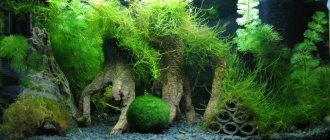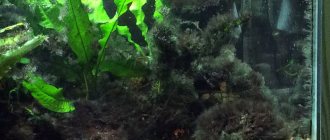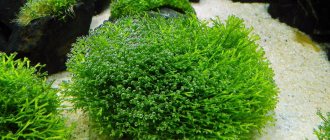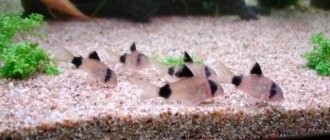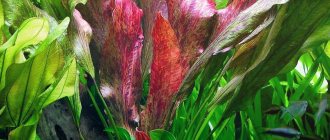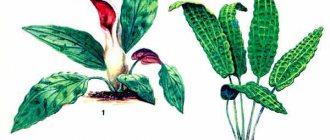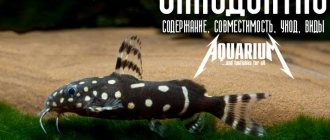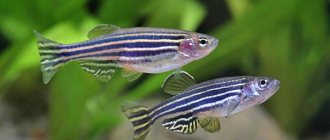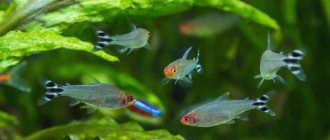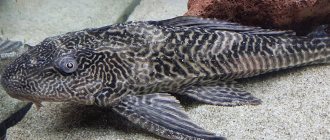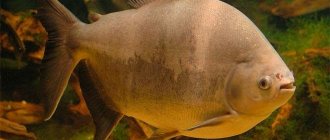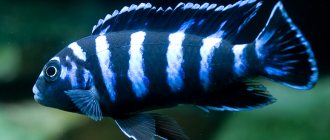Vietnamese is a real aquarium weed that is rarely or improperly cleaned. Under certain conditions, it spreads quickly, seriously damaging higher aquatic plants. Therefore, aquarists and hobbyists should know how to prevent its occurrence and development.
- 1 Botanical description and natural habitat
- 2 Reasons and conditions for the appearance
- 3 Mr. Tail recommends: how to distinguish a Vietnamese from a Beard
- 4 How to deal with Vietnamese 4.1 Mechanical
- 4.2 Chemical
- 4.3 Biological
Description
Externally, the Vietnamese looks like a black thread-like coating 5–20 mm high, reminiscent of dark moss. At one time, it was brought from Southeast Asia along with other tropical plants, so it prefers warm water.
It settles on aquatic vegetation that grows slowly and gradually covers it with a kind of moss.
Did you know? The largest aquarium in the world is located at the Radisson Hotel in Berlin. This is a cylindrical giant with a height of 25 meters and a diameter of about 11 meters, which houses about 2,700 marine fish of more than 100 species. The volume of this aquarium is almost a million liters.
Characteristic signs
Vietnamese resembles tufts of dirty gray, black or brown hairs, no more than 2 cm long. The algae is located at the tips of the leaves of aquarium plants and gradually occupies their entire surface. In addition, the Vietnamese can settle on decorative items, artificial soil, protrusions and uneven surfaces.
The plant is classified as a red algae due to the presence of a coloring substance in its structure, which can only be detected experimentally. Pigmentation appears under the influence of solvent or alcohol.
Why is it harmful to an aquarium?
Vietnamese is an extremely tenacious and weedy algae that is very difficult to remove. It penetrates the tissues of aquatic plants and firmly attaches to the soil, aquarium walls and equipment.
Also find out what harm they cause and how to get rid of blue-green algae, planaria, and diatoms.
And although this is not a parasitic biological species, it significantly harms aquatic vegetation, shading it and preventing the access of beneficial elements. Because of this, the plant suffers greatly and literally suffocates.
It does not particularly harm the fish, but creates an unpleasant overall appearance of the aquarium.
Kinds
Vietnamese is a type of red algae. The name indicates its geographical homeland. And the “victorious march” through other countries of the world began, according to experts, during the export of some plant products from Southeast Asia.
Among the Vietnamese's close relatives are algae, which are grouped by color. If the Vietnamese algae is red, then there are also brown, blue-green, yellow-green and simply green algae, and even golden.
FACT: The Latin name for Vietnamese is Audocinella. In addition, it is called purple, compsopogon and red beard.
Conditions and causes of occurrence
The main source of any aquarium problems is a violation of the biobalance, that is, the balance of the inhabitants inhabiting it - fish, algae, mollusks, bacteria. An aquarium is a living ecosystem, and everything that inhabits it has a great mutual influence on each other.
Find out more about what you need for a home aquarium, about a heater, about an external filter, how to choose a lamp, soil, and what the temperature and hardness of the water in the aquarium should be.
A weed appears only under conditions of improper care and a high content of organic matter on which it feeds.
The main causes of the problem:
- the aquarium is rarely washed, the soil is not cleaned, the water hardly changes;
- new plants, decorative elements or driftwood are placed without pre-treatment;
- insufficient lighting level;
- excess fish food;
- overcrowding of the aquarium.
Important! Introduce a spherical cladophora in the aquarium, which loves to absorb phosphates and other substances that support the life of the Vietnamese.
Where does Vietnamese come from?
If this algae begins to bother you, it means you are not following the rules for caring for your aquarium or are not handling new plants carefully. Most often, algae enters the aquarium along with other vegetation, especially if it was purchased not in a normal store, but somewhere on the market. You can also bring a Vietnamese fish into an aquarium with new fish and even with unwashed hands, if you have previously been in contact with plants or living creatures from other bodies of water. Algae reproduces by spores that are invisible to the naked eye, so it is always necessary to disinfect everything that enters the aquarium. The Vietnamese easily tolerates high or low temperatures, it feeds on organic matter that is carried by fish or currents, so the algae multiplies very quickly. Because of the pigment included in its composition, the Vietnamese fish is not eaten by most fish and other aquarium animals. However, there are some aquatic inhabitants that even eat it.
Some aquarists report that when there is a lack of light, Vietnamese fish reproduce more slowly. Perhaps this is true, but constant darkness will also destroy other inhabitants of the aquarium. Algae will appear faster if there is a lot of silt at the bottom, especially if fish get their food there. Through their actions, they form clouds of different particles, which may include Vietnamese spores. To prevent the appearance and rapid spread of algae, do not keep too many animals in one aquarium. Their waste products are deposited in the mud, creating organic matter on which it feeds. If you are just about to start an aquarium, do not rush to fill it until the biological balance is established in it. It is better to plant diseased plants immediately, as they will be the first to become victims of the pest.
Where does Vietnamese come from?
Fighting methods
To prevent this problem from arising, you should adhere to certain rules:
- Do not create favorable soil for flip flops by getting rid of excess organic matter in a timely manner - do not overfeed the fish, remove excess food, control the cleanliness of the soil.
- Mix fresh water periodically - every week 20-30% of the water volume. After a couple of months, a decrease in the number of flip flops in the aquarium will become noticeable.
- Despite the possibility of green algae growing, increase illumination to 0.5–1 W per liter of water for twelve-hour work per day .
- Change water parameters - increase hardness and alkalinity. The hardness must be increased to 8 dGh, for which calcium chloride should be added to fresh water at the rate of 2 ml per liter of water. One gram of baking soda per 5 liters of water will raise the pH level. The fish should be temporarily relocated to another place or their living conditions should be changed very gradually.
- Coal dust powder will help deal with the pest in just a few times. It is necessary to add the powder and stir well until it settles. The fish from this aquarium should be removed.
- Effective chemical methods are brown or boric acid, antibiotics. Despite the effectiveness, it should be taken into account that acids can harm the rest of the inhabitants of the aquarium, even to the point of their death.
- A biological method in which fish are introduced into the aquarium and eat flip-flops - labeo, Siamese algae eater, Ancistrus catfish, fish of the Carpus family. However, they only clean the infected vegetation and do not kill the parasite completely.
- A safe and effective way to control weedy algae is to keep apple snails . They should be small and numerous - about a hundred. After the aquarium is cleared of black beard, it is necessary to remove all the snails, otherwise they will begin to destroy the rest of the greenery.
- If all of the above methods do not help, then you need to try replacing 10–25% of the water every day . And since algae are very fond of phosphates and nitrates, fresh water should be checked with indicators for their absence (as well as ammonia and chlorine).
Did you know? By studying a male Mozambican tilapia (Oreochromis mossambicus), scientists were able to establish that, like many species, he marks his territory with his urine. Moreover, the higher the hierarchy of the male and the greater the number of conflicts, the more often he “marks” his area.
Ways to independently counteract
The fight against red algae begins with mechanical measures. First of all, remove them manually - as many as possible . It is necessary to remove from the water all the stones and objects intended for decoration, but now occupied by the Vietnamese. Don't rush to throw them away: after you clean them, boil them in water for twenty minutes, they can be used again.
Remove the plants from the water and rinse under the tap (the water should be running). All diseased fragments must be removed, even if they were damaged not by red algae, but for some other reason. The fact is that your enemy first of all attacks old and diseased, rotting plants - you cannot leave him a chance for another attack.
You also need to carefully work on the rest of the contents of the aquarium: the sand is cleaned and siphoned, thermometers are treated with alcohol, snags are boiled in boiling water, just like stones.
If the item cannot be boiled (it will not withstand high temperatures and will simply have to be thrown away), use a preparation that is sold in hardware stores under the name “Whiteness”. Dilute it in water, leave the item being treated in it for two to three days. Within a day, the flip flop clinging to him will begin to turn grey, and by the end of the procedure it will completely dissolve. If at the same time the color of the object that you were processing suffers, you will have to come to terms with it - you simply have no other option, since there is no way to ideally clean some spongy surface of a stone or intricate artificial plants.
In addition to mechanical methods of struggle, there are also scientific ones. Their purpose is to ensure biological balance in the aquarium . This means that you should always control the number of fish and plants , avoiding “overpopulation” of the aquarium. It may be necessary to abandon those species of fish (relocating them to another place) that dig too actively in the soil, polluting it with waste products and food residues. Regarding food, you also need to figure it out - its quantity should be sufficient, but not excessive.
Inspect your green spaces. Try to plant the fastest growing species (hornwort, hygrophila, vallisneria). They will begin to actively feed, taking nutrients from the water, not giving the algae a chance to “raise their heads.”
By the way, the level of phosphates today can be controlled using chemicals. These are the so-called absorbers. They are produced in the form of granules, filling them into a mesh bag and placing them in the filter housing.
Facilities
To effectively get rid of the problem, there are several proven methods:
- White. Remove diseased plants from the aquarium and place them in a solution of bleach and water in a ratio of 1:20. Literally within 5–7 minutes the color of the beard will turn white, then green, and after that the algae will completely die. After treatment, the plants should be washed under cold running water for 30 minutes and temporarily placed in another container for quarantine.
- Table or apple cider vinegar. Sick plants should be placed for a couple of minutes in a solution of 7% vinegar and water in a ratio of 1:2. The root should not be processed to avoid burning it. Next, rinse the plant with cold running water for several minutes and return it to the aquarium. The remaining beard should turn white or yellowish in color and will fall off later. This remedy works well for Anubias, Cryptocoryne, Echinodorus. Just one procedure is enough.
- The drug "Tetra Algimin". Purchased at pet stores and applied according to the instructions for the product. A few days after treatment, the black plaque will begin to crumble and will completely disappear within a week. After 3 weeks, repeated preventive treatment is carried out.
- Carbon dioxide. The Vietnamese does not like it and installing CO2 will help completely get rid of this algae.
Prevention
As a preventive measure, you can plant plants that grow quickly and feed them with potassium-free phosphate fertilizers. It is also worth measuring the level of nitrates; it should not exceed 5 mg per liter of water.
In their absence or low content, algae do not absorb phosphates and flip flop does not form.
Also, do not forget to periodically update the aquarium water, clean the soil and remove excess food. And before planting a new plant, treat it with Bicillin-5 or penicillin.
Disinfection is carried out in a separate container with a temperature of 25–26 degrees Celsius; for the first couple of hours it should be in the shade, and then moved to a lighted place.
As a preventive measure against black beard, it is good to treat new plants with bleach, but not all plants tolerate it. For example, to disinfect anubias or cabomba, it is better to take hydrogen peroxide in the amount of 20 ml per hundred liters of water.
Important! Avoid heavily blowing the tank as it makes the water cloudy and rich in organic breeding ground for the flip flop.
Adviсe
There are several little secrets for getting a clean and well-maintained aquarium:
- to avoid infection with black beard, you need to maintain the optimal number of aquarium fish - at least 10 liters of water per fish measuring 5–7 centimeters;
- antibiotics often have only a short-term effect on the Vietnamese;
- It is necessary to maintain a good level of lighting; it is advisable to change fluorescent lamps 1-2 times a year.
An aquarium with a flip flop is a problem that is quite difficult to deal with. But now, knowing all the ways and means of dealing with it, you can successfully do this. Be patient and consistent, and you will succeed!
Mr. Tail recommends: how to distinguish a Vietnamese from a Beard
Scarlet grass is often confused with Blackbeard algae, otherwise called Compsopogon. In order to provide timely assistance to aquarium inhabitants, it is important to know the characteristic differences of the Vietnamese:
- its threads are collected into tassels, while the second one only grows in length, creating a fringe of green or dark green color;
- it begins to develop on the edges of leaves located far from the flow, and then takes root on other surfaces, while Compsopogon is less whimsical in placement;
- under the influence of alcohol, acetone or any solvent, the red pigment of Flip Flops, which is absent in Beard, appears;
- it is very hard and strong to the touch, firmly settles on vegetation, unlike other algae;
- excessive vitality reaches the point that Crimson can survive a month in pitch darkness;
- because of the coloring extract, no one eats it, except for a few types of snails, while any algae-eating fish can cope with Beard.
These features will help you correctly determine the nature of the weeds that bother aquarium inhabitants and select effective methods to combat them.
